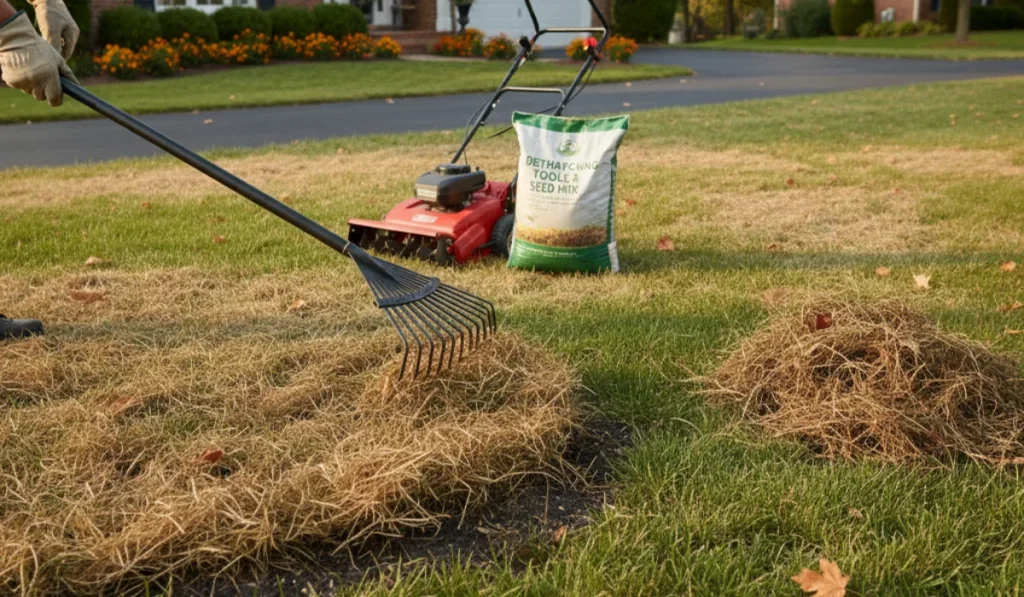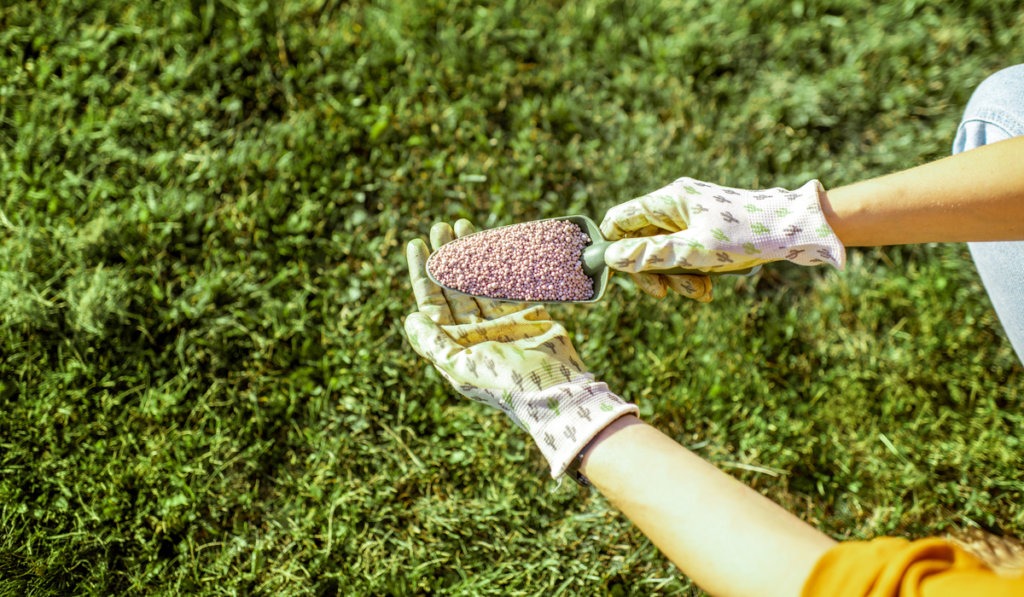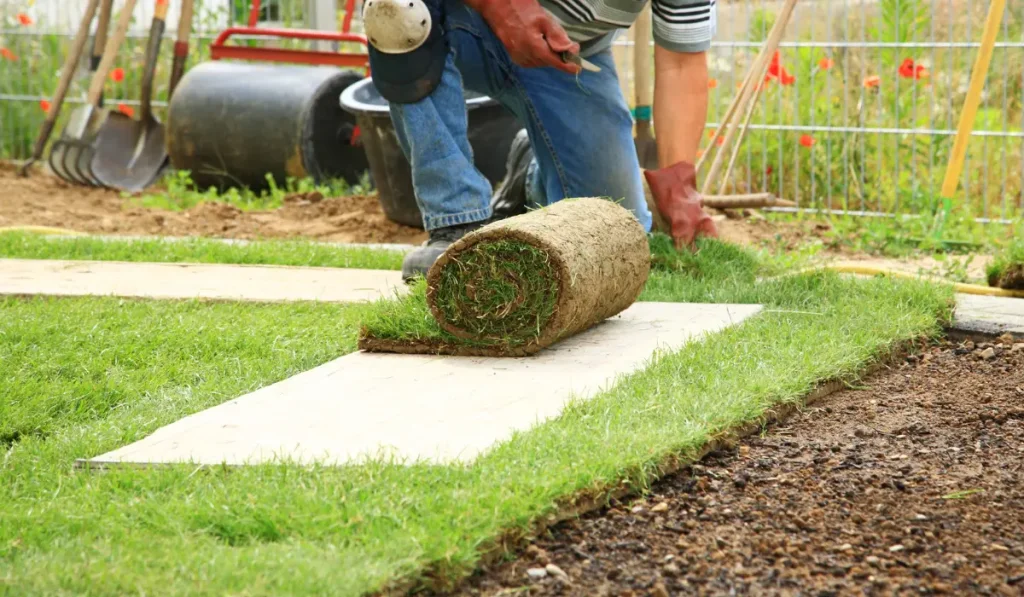If you’re seeing molehills, raised trails, or small holes popping up in your lawn, you’re likely dealing with a mole problem. Moles can cause serious turf damage as they burrow underground in search of food.
While they’re not eating your grass, their constant digging and tunneling can leave behind an uneven surface, ruin flower beds, and disrupt landscaping efforts.
For California homeowners who take pride in healthy turf, understanding how to get rid of moles is just part of smart lawn care.
Key Takeaways
- Moles show up in lawns with moist soil and plenty of grubs, earthworms, and other underground insects.
- Castor oil repellents, grub control, and collapsed tunnels can reduce mole activity without harming lawns or earthworms.
- You may need traps to stop mole damage, but knowing the difference between moles, voles, and gophers avoids wrong fixes.
- Some DIY solutions are unreliable, and long-term mole prevention depends on lawn care, drainage, and landscaping improvements.
Know Why Moles Are There in the First Place
Moles show up where the soil is soft, moist, and full of insects. Their primary food source includes grubs, mole crickets, and other larvae.
If your lawn is well-maintained and rich in organic matter, it’s a five-star restaurant for these critters. That doesn’t mean you did something wrong. It just means your lawn is working as it should.
Target Their Food Source to Limit Mole Activity
Controlling grubs and other larvae is often the most effective way to reduce mole activity. You can treat your lawn with beneficial nematodes or milky spore, two DIY options that target pests while preserving beneficial insects like earthworms.
These solutions are safer than insecticides and blend right into a sustainable lawn care routine. Apply them with a garden hose sprayer or mix them into the soil before watering.
Once applied, keep an eye out for a decline in mole tunneling over the following weeks.
Disturb Mole Tunnels to Disrupt Their Routes
Moles create extensive networks of mole tunnels, many of which are abandoned after one use. But the active tunnel, the one they use regularly, is where you want to focus.
Flatten tunnels daily and observe which ones get rebuilt.
That’s the active tunnel.
Interrupting these pathways regularly is a non-invasive method that can help repel them over time.
Use Castor Oil-Based Mole Repellents
Castor oil-based mole repellents don’t kill moles, but they do make your soil unpleasant enough to push them out. These products come in liquid and granular forms and work best when applied to damp soil, followed by a light watering to help the repellent soak into mole tunnels.
Field tests in Kentucky showed that lawns treated with castor oil saw reduced mole activity for several weeks. While results can vary, this approach is lawn-safe, and when paired with consistent lawn care, it can help steer moles away without harming earthworms or your grass.
Consider Physical Mole Traps Carefully
If mole damage continues and you prefer a hands-on approach, some homeowners try mole traps like scissor traps or harpoon traps to control the problem. Place these traps along active tunnels. Trapping moles requires patience and timing, and it should always be done carefully, especially if kids or pets are in the area.
Some homeowners try products like mole baits or mole killers. Keep in mind, we don’t sell or recommend poisons.
But understanding what’s out there helps when discussing your options with pest control professionals if the mole infestation becomes unmanageable.
Improve Drainage and Aerate Compacted Soil
Moles prefer moist soil because it’s easier for burrowing.
If your lawn stays damp after watering or rain, you might be creating ideal conditions for mole activity. Aerating the soil helps with drainage, reduces compaction, and improves root development.
It’s also a great step to take before laying new sod, as it boosts absorption and oxygen flow in the soil.
Optimize Your Landscaping to Make Your Yard Less Inviting
Don’t overlook your lawn’s layout.
If you have areas with heavy ground cover, overwatered flower beds, or low-lying shady spots, these can become mole hotspots. Try mowing regularly, removing excessive thatch, and keeping flower beds trimmed.
For added protection, line raised beds with hardware cloth to block underground access.
Strategic landscaping also includes adding natural deterrents like marigolds and alliums. These plants give off scents that can repel moles, voles, and even groundhogs.
Learn How to Tell Moles, Gophers, and Voles Apart
Moles, gophers, and voles can all damage your lawn, but they leave different signs.
- Gophers: Plug up their holes and chew plants.
- Voles: Gnaw at the base of grass and shrubs.
- Moles: Create raised tunnels and scattered dirt mounds as they go.
| Pest | Signs of Damage | Behavior |
|---|---|---|
| Moles | Raised surface tunnels, scattered dirt mounds | Dig underground in search of insects; don’t eat plants |
| Gophers | Plugged holes, chewed plants, and roots | Feed on vegetation; create crescent-shaped mounds |
| Voles | Gnawed grass bases, runways through turf | Chew bark and grass; active above ground |
Knowing which critter you’re dealing with helps ensure you’re using the right approach.
Avoid DIY Mole Deterrents
Some homeowners experiment with homemade deterrents like dish soap mixtures sprayed into tunnels. Others try ultrasonic devices that emit vibrations designed to repel moles.
While the effectiveness of these tools can vary depending on soil type and mole behavior, they may help when combined with more proven methods.
Know What to Do After the Moles Are Gone
Even after you get rid of moles, their tunnels can leave soft spots and uneven patches across your lawn. This is where reseeding or resodding comes in.
It’s also the perfect time to reassess watering habits, check drainage, and schedule regular mowing to keep conditions less appealing for returning critters.
Frequently Asked Questions
Can moles damage underground irrigation or sprinkler systems?
Yes, moles can displace or puncture flexible irrigation lines while digging. If you notice uneven watering or soggy spots, it’s worth checking for mole tunnels interfering with underground sprinkler components.
Do moles hibernate during the winter in California?
No, moles stay active all year in California. They dig deeper during colder months but continue tunneling in search of food. Their presence may slow, but it doesn’t completely stop.
Will laying new sod attract more moles?
New sod doesn’t attract moles on its own, but moist soil can bring up grubs. Treating for grubs before installation helps prevent moles from showing up after fresh sod is laid.



